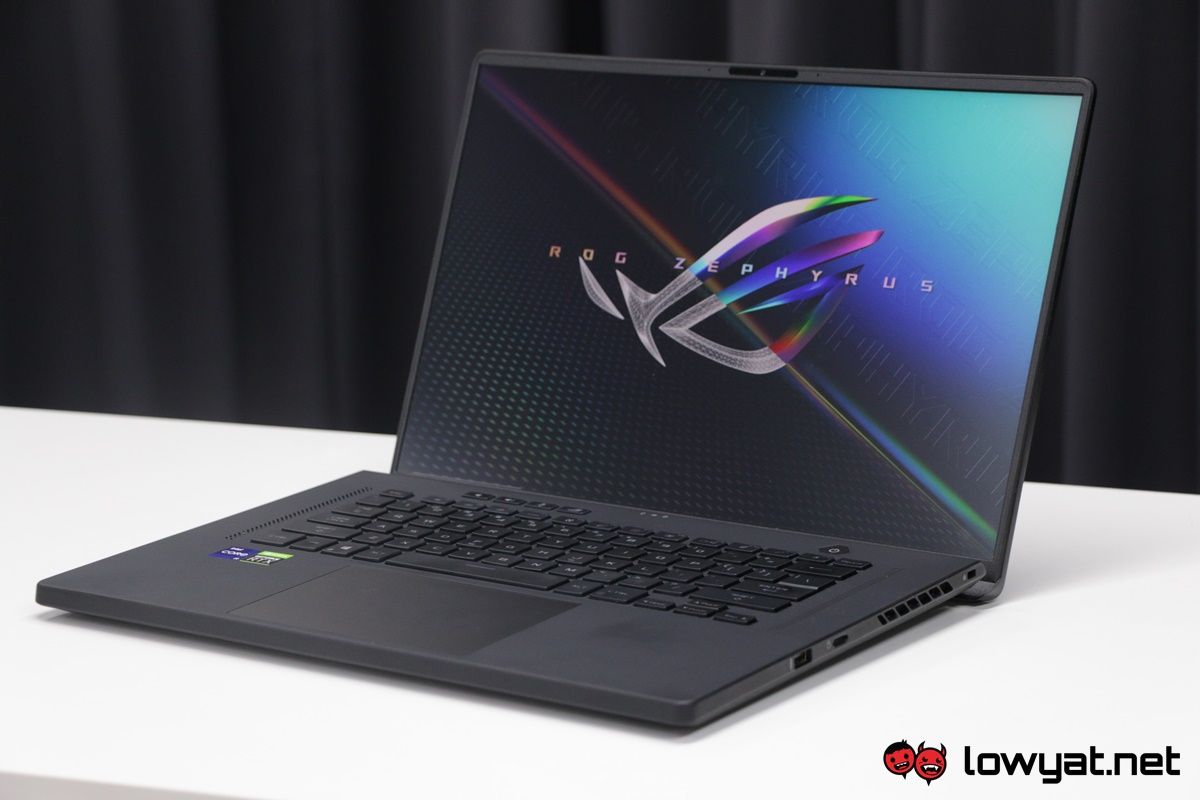Earlier in the year, I mentioned in one of my reviews that, were you to look for an 11th generation Tiger Lake gaming laptop, as an alternative to the growing influence that is AMD’s Ryzen Mobile CPUs, you would have to tough it out for a while. Fast forward to today, one such Intel-powered machines is now in my lab: the ASUS ROG Zephyrus M16.
Specifications
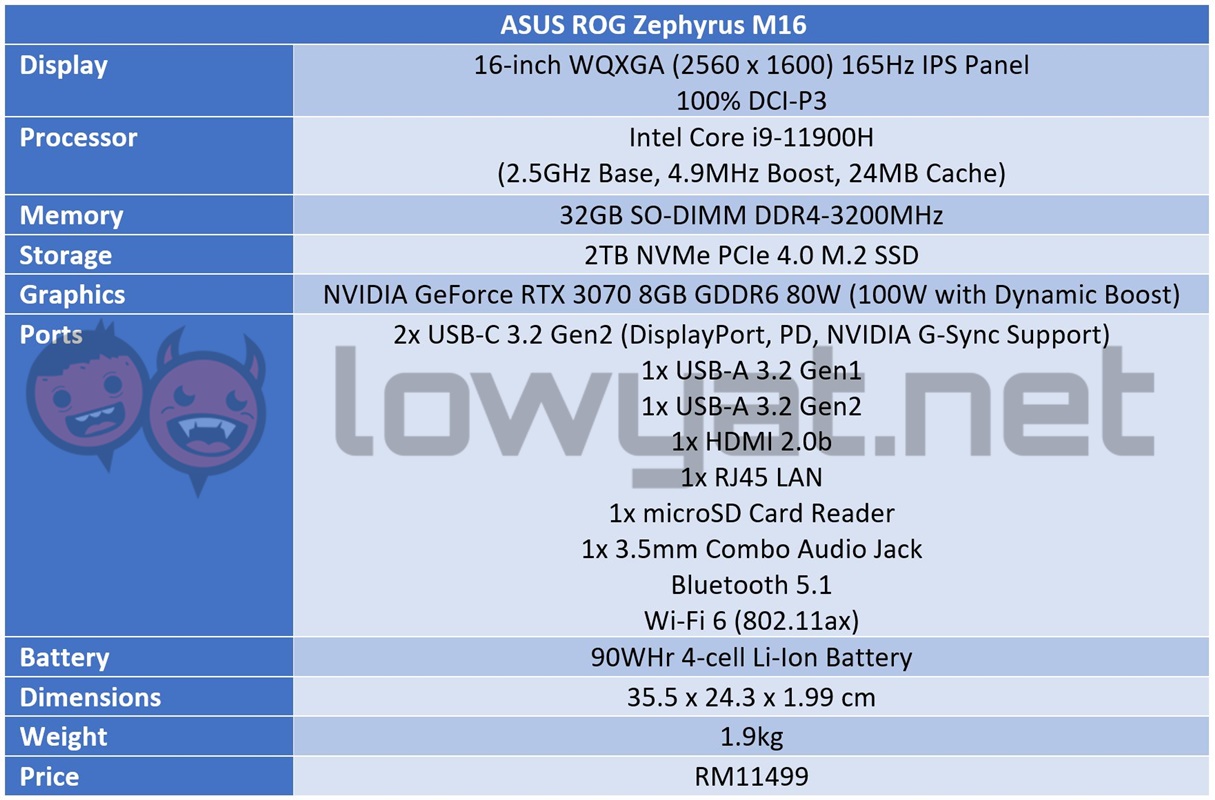
Design
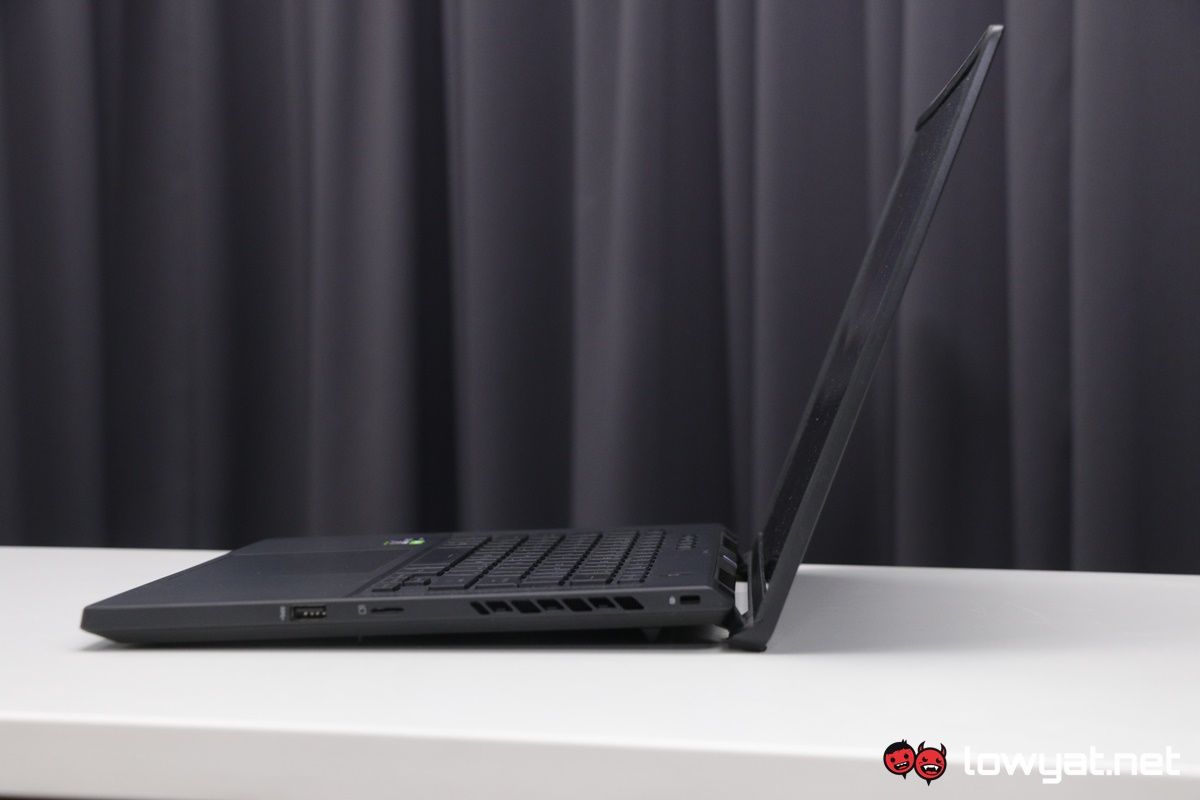
When it comes to the looks and design of the M16, ASUS isn’t straying very far from its muse, the Zephyrus G Series laptops and more specifically, the Zephyrus G15. If one didn’t know any better, they’d be inclined to think that the M16 is the identical twin of ASUS’ Ryzen-powered laptop.
On the surface of the M16, the laptop sports the same magnesium allow chassis, same anti-fingerprint coating that works to a varying degree, and the same Ergolift hinge that has become the staple of all Zephyrus laptops. Even the keyboard is identical, right down the absence of the Print Screen key that I firmly believe is crucial and shouldn’t have been excluded.
Same outlook, different innards.
There are obviously some differences between the two models, both internally and for some creature comforts that usually come part and parcel with laptops. Firstly, and to state the obvious, there’s the Intel Core i9-11900H CPU, along with 2TB of NVMe PCIe 4.0 storage. Then there’s the GeForce RTX 3070 with a base TGP of 80W, but can be pushed to 100W with the onboard Dynamic Boost.
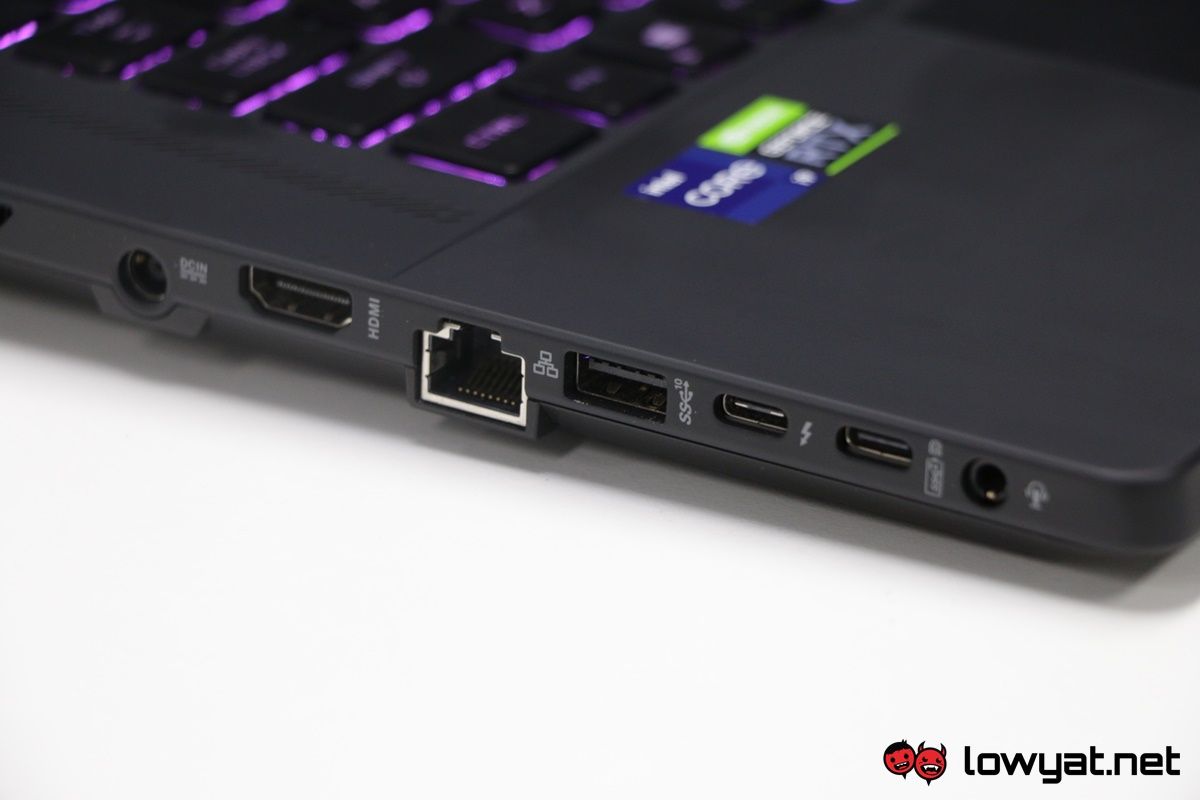
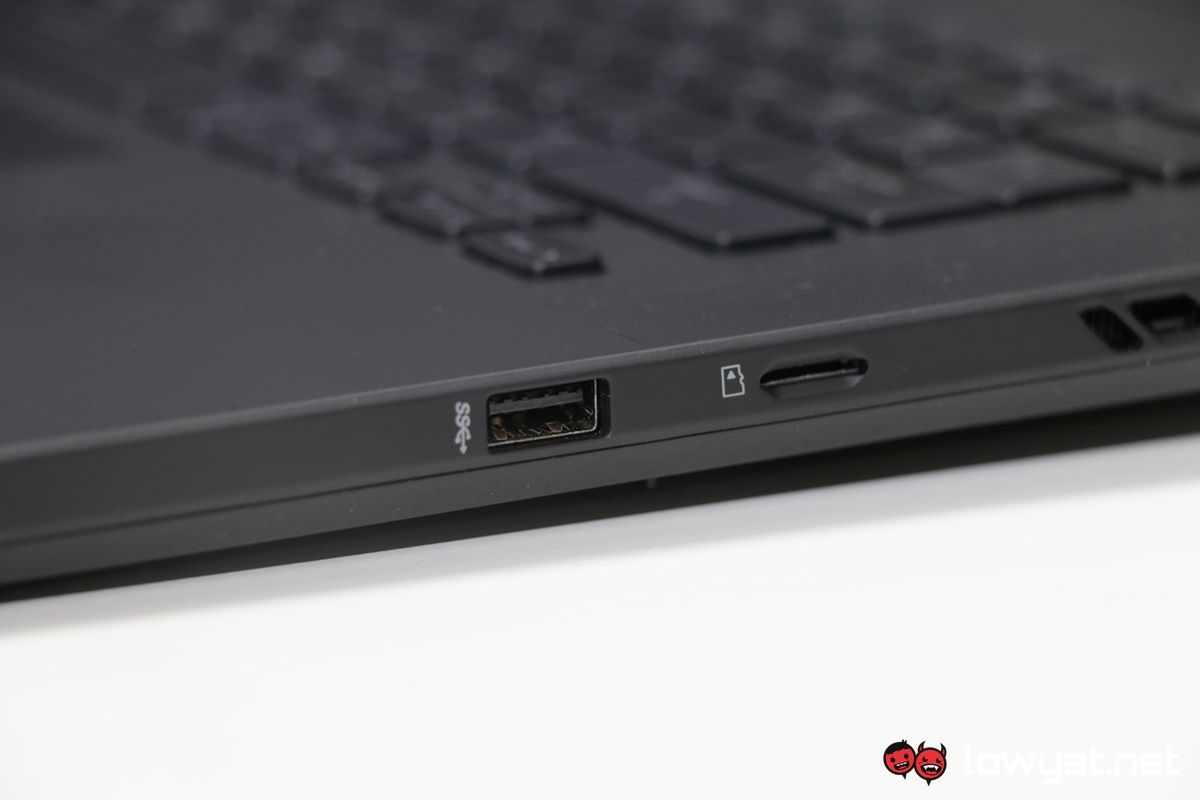
As for I/O ports, the M16 has just as many and similar ports to the G15 but do note that only one of the USB-A 3.2 ports is Gen2, while the other is just a Gen1 port. On another note, the laptop’s keyboard also has full-functioning, per-key RGB LEDs, and is not just a back-lit keyboard with only a single colour.
Where the M16 really begins to differentiate itself from its Ryzen-powered counterpart is in its display. Where the G15 merely sported a 15.6-inch panel with a 16:9 aspect ratio, ASUS has beefed up the display of the M16 by an additional 0.4-inches, stretching the panel to its base, as well as increasing the aspect ratio to 16:10. While still retaining the same chassis size as the G15.
The increase in size and aspect ratio notwithstanding, the display has a maximum refresh rate of 165Hz.
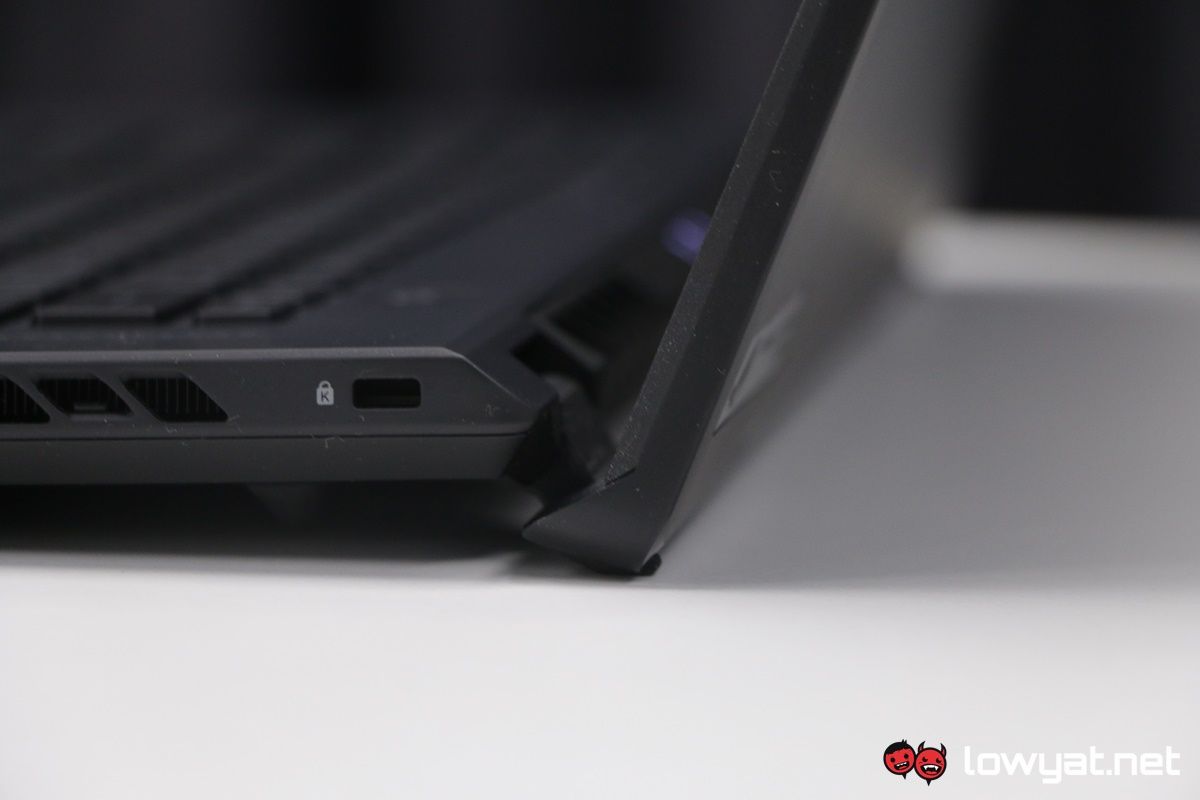
Despite its thinner bezels and slightly wider aspect ratio, though, the M16 is equipped with the one feature that the G15 is devoid of: a webcam at the top. Which makes this laptop a more productive or virtual session-friendly machine.
User Experience
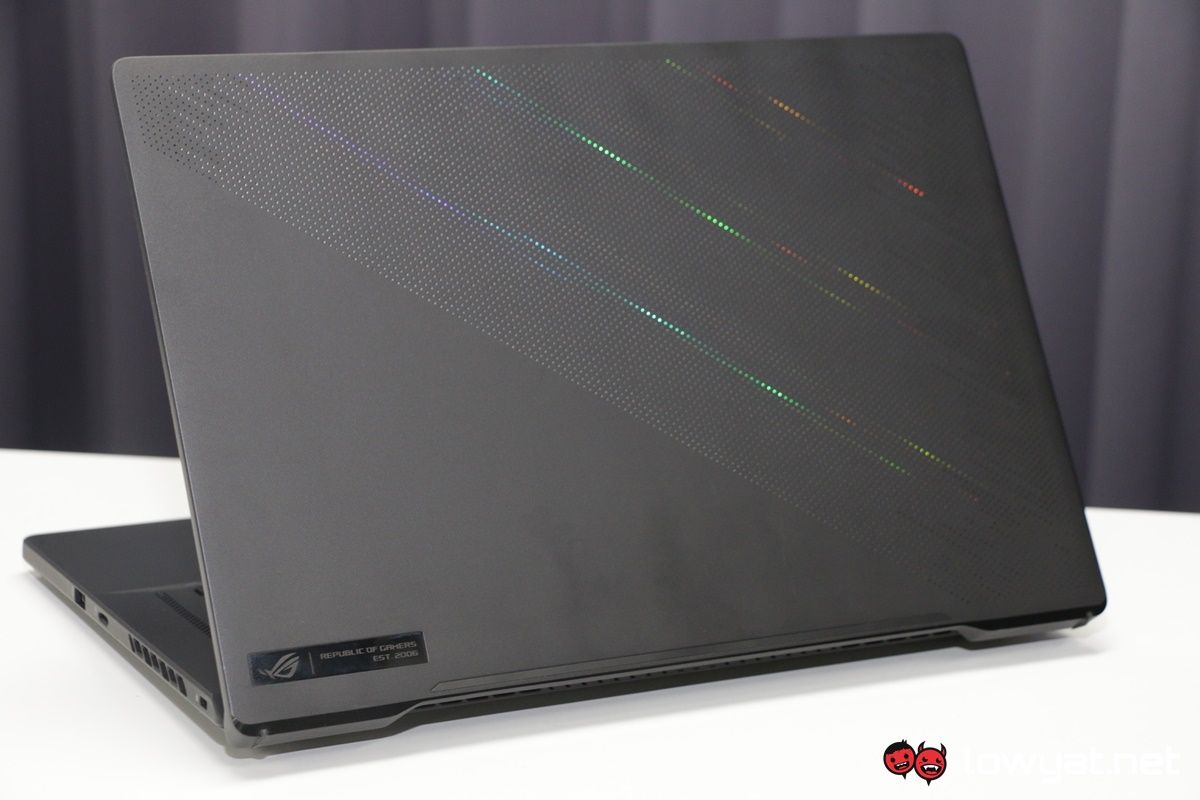
While the M16 may look and feel similar to the G15, that’s only true to a certain extent. But let’s take them one at a time. First on the list is the typing experience: While the layout still feels slightly cramped – there is a tendency of accidentally hitting the wrong key – it isn’t as constricted as the keyboard in the Razer Blade 14 Ryzen, which I reviewed not too long ago.
And while we’re at it, the keys of the M16 also have much better key travel and do not feel as hard on the fingertips at the point of actuation. In fact, I only wish that ASUS had made them a little more clicky and less tactile. On a distantly related note, the large trackpad of the M16 is also very responsive, although I usually find myself using my own wireless mouse to navigate my way on the laptop.
WQXGA resolution and the 16:10 aspect ratio is a real treat.
As I mentioned earlier, one of the main attractions of the M16 is its 16:10 aspect ratio display, which is typically great for professional video editors and content creators. The extra display real estate does works to the benefit of gamers too, although in the grand scheme of things and based on my experience, it is a minor gain. At best, you’re looking at a small extension to the overall experience and on top of that, most game titles aren’t designed to take advantage of the taller aspect ratio.
Speaking of gaming, the activity is very clearly a no brainer for the M16. The RTX 3070 in the machine has no problems chewing through most of the games in my list at their highest graphical preset and staying above the 60 fps line. For the titles that it does struggle with, though, the M16 is surprisingly deft at keeping them somewhere between 40 and 50 fps.
Performance comes at the cost of loud and whiny cooling.
Still on the subject of performance, the cooling solution attached to the M16’s CPU and GPU are anything but discreet. When put to the task, the fans get so loud to the point that I can actually hear coil whine. Despite that, temperatures soared as high as 96°C on all cores of the 11900H CPU, while the RTX 3070 peaked at 76°C, making this laptop one of the toastier machines I have tested. The silver lining to all this, though, is that all heat is focused around the upper half of the laptop’s base, leaving the palm rest of the M16 relatively cool to the touch. Even when the laptop is working overtime.
Decent battery life, but that’s to be expected from an Intel-powered laptop.
Then there’s the battery life and power efficiency of the Core i9-11900H in the M16. Off the wall and coupled with the massive 90WHr battery, I get an average of eight hours on a single charge, which is mildly impressive and frankly speaking, battery endurance is an area that the chipmaker is intimately familiar with and has made strides in the field, so this is within expectations of an Intel-powered laptop.
Benchmarks
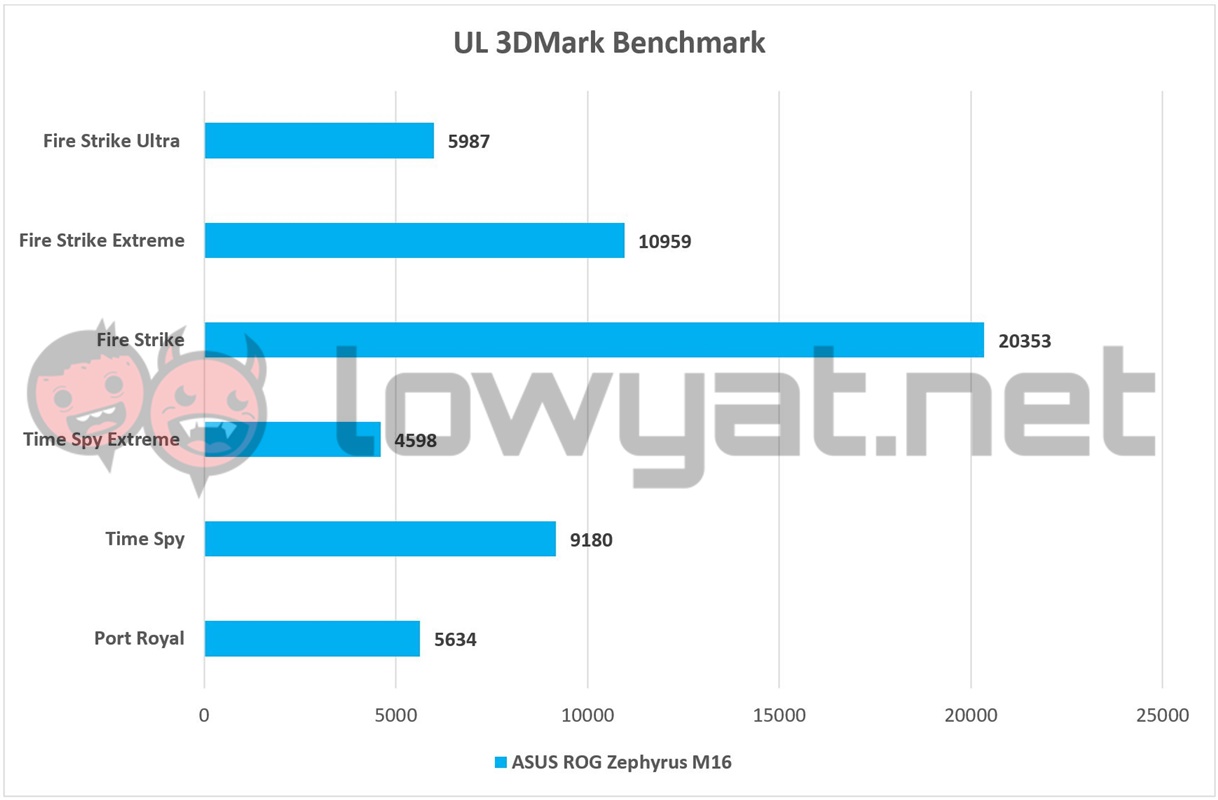
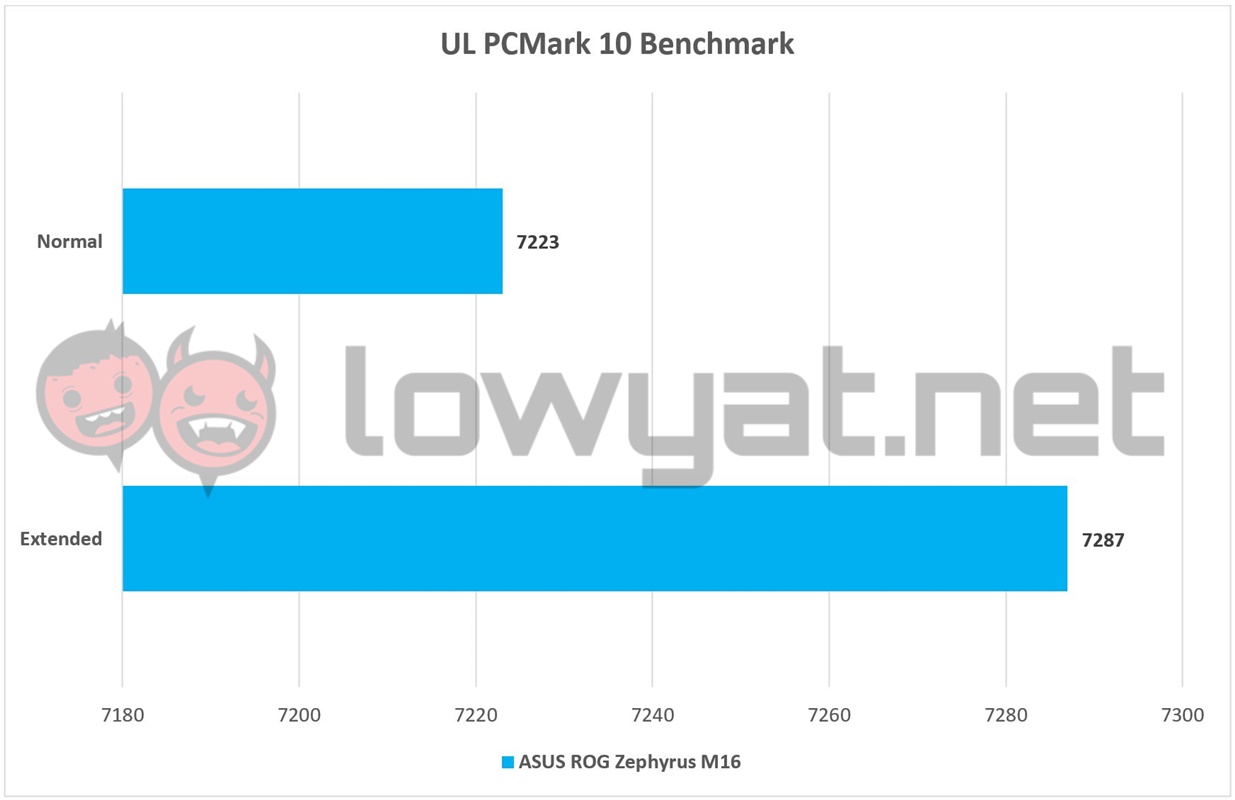
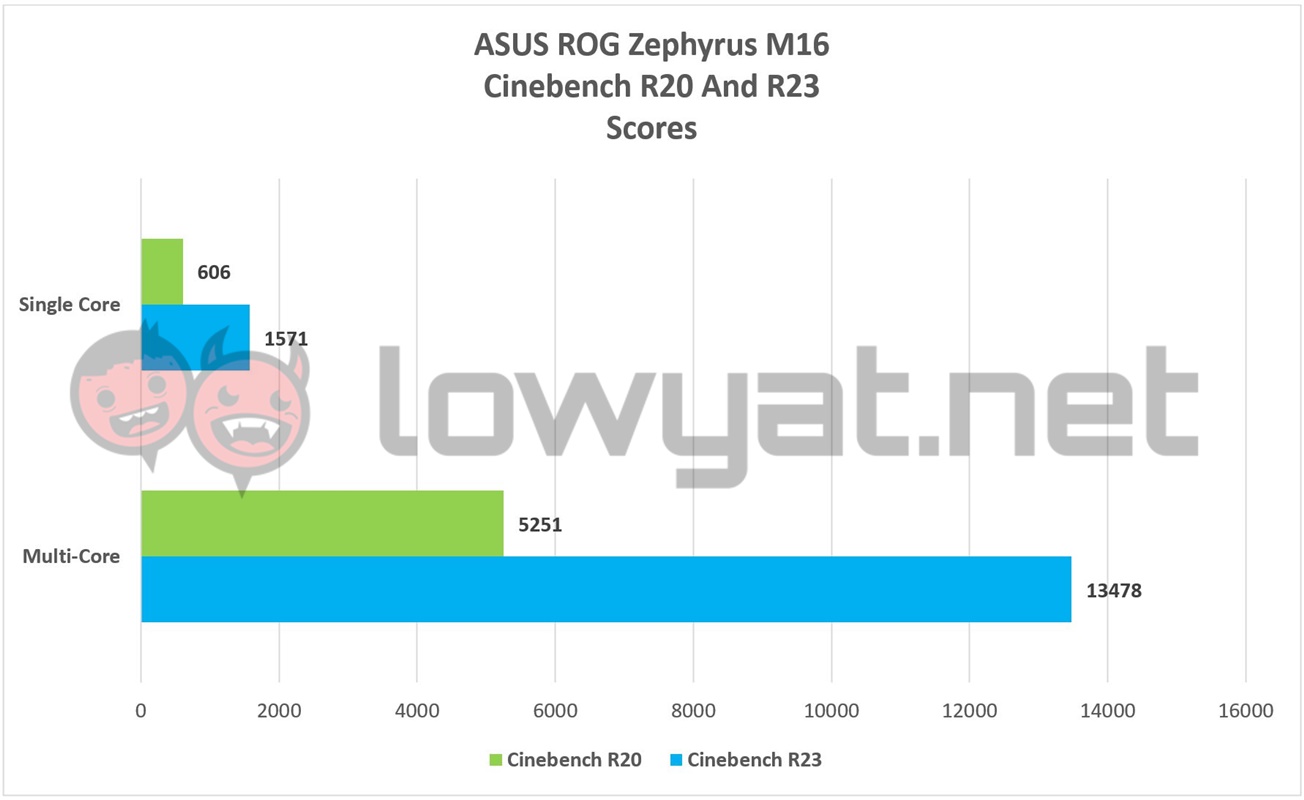
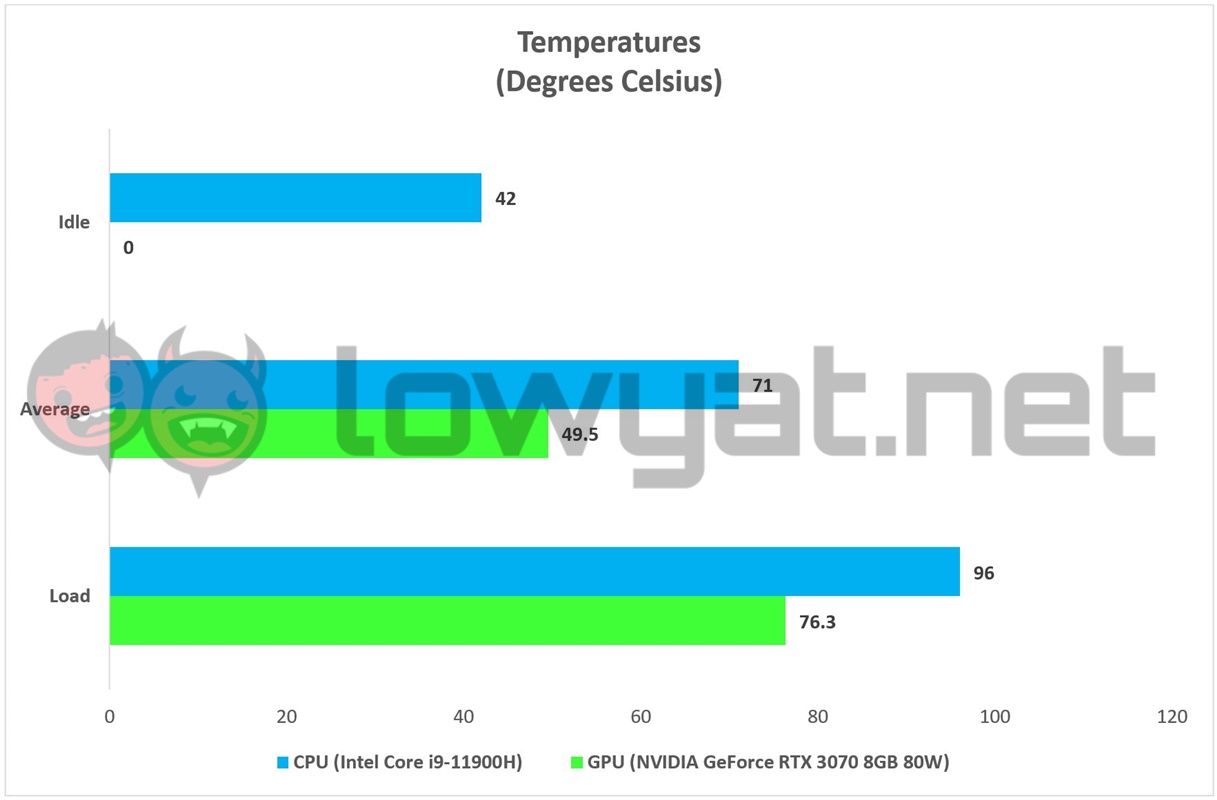
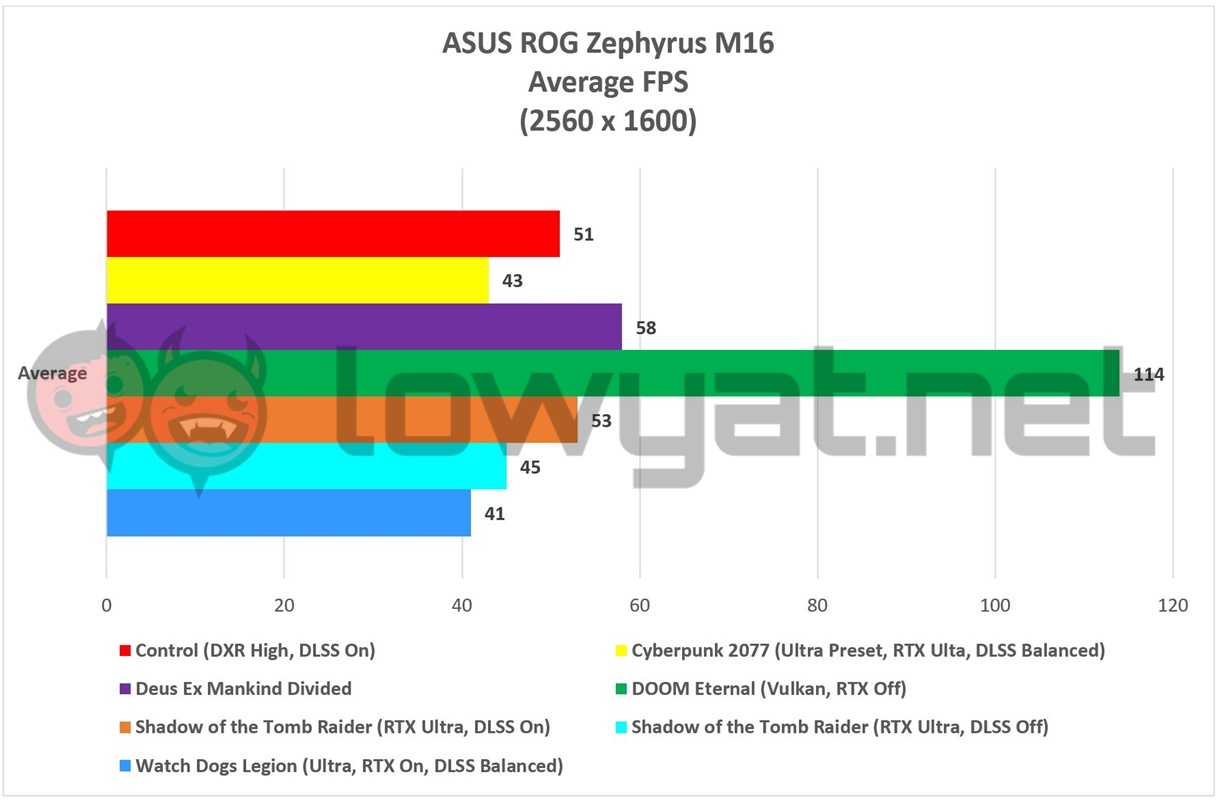
Competition
If you’re looking for alternatives to the Zephyrus M16 that are similarly specced, there are plenty of choice. Surprisingly, a couple of the alternatives happen to be Ryzen-powered laptops, which is just as good.
ASUS ROG Zephyrus G15
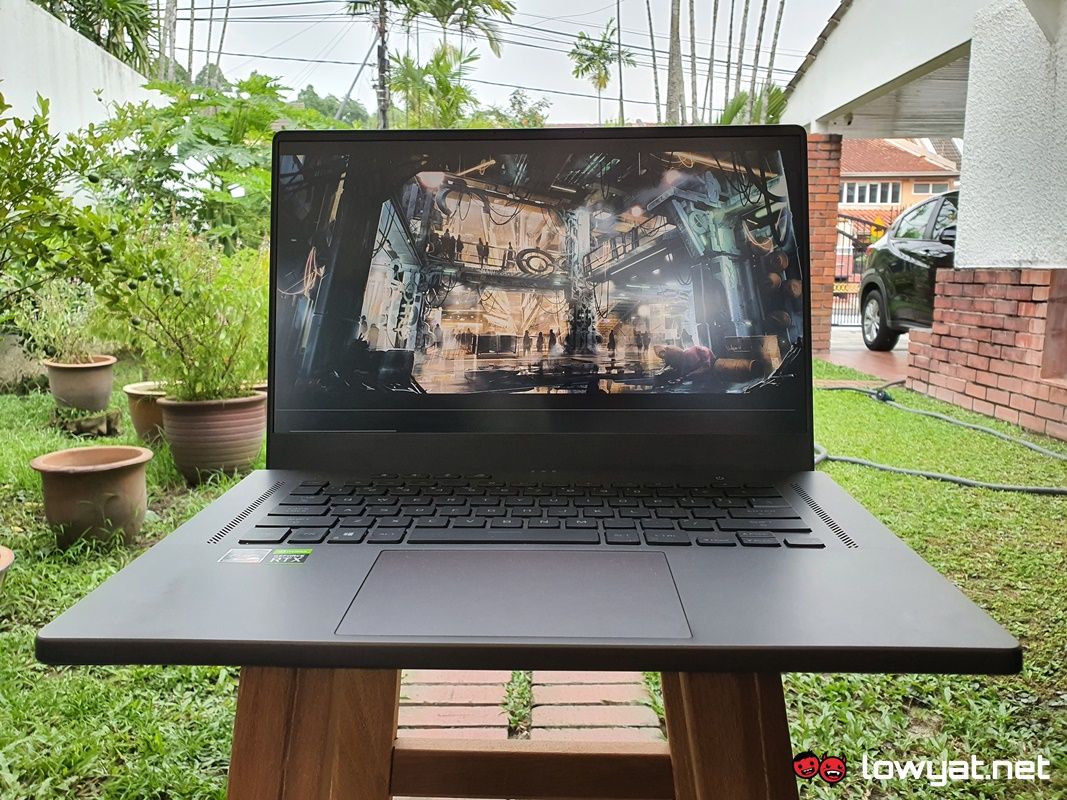
Clearly, I’ve mentioned the Zephyrus G15 several times throughout this review, so it wouldn’t be fair for me to talk about it and not list it as a challenger. Once again, the top-of-the-line version of this laptop sports an AMD Ryzen 9 5900HS CPU, an NVIDIA GeForce RTX 3080 100W, 32GB DDR4-3200 RAM, a 90WHr battery, and a 15.6-inch WQHD display with a 165Hz refresh rate.
It also comes with up 1TB NVMe PCIe 3.0 SSD and again, as I mentioned, it has no webcam. On top of that, it’s just as pricey as the M16 at RM11499. Because both machines use the same chassis so really, if you can look past the absence of a webcam, it really boils down to whether you want an Intel or AMD powered machine.
Lenovo Legion 5 Pro 16
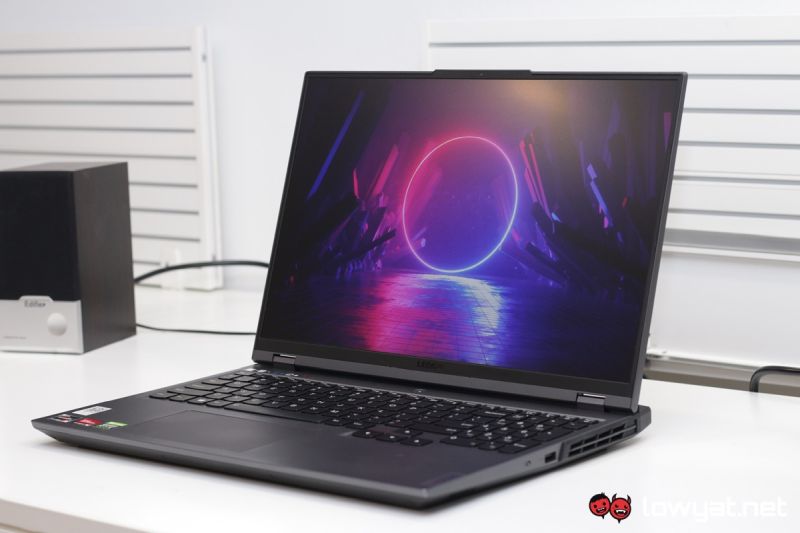
The Lenovo Legion 5 Pro 16 makes the list as one of the only other gaming laptops with a 16-inch display and 16:10 aspect ratio. The biggest appeal of the Legion 5 Pro 16, though, is its asking price; the highest tier SKU of this laptop retails for RM7709, which is significantly more affordable than the M16.
For that price, you get an AMD Ryzen 7 5800H, 16GB DDR4-3200MHz RAM, 1TB NVMe PCIe 3.0 SSD, an NVIDIA GeForce RTX 3070 140W, and a WQHD panel with 165Hz refresh rate. On top of that, the laptop sports a wide array of I/O ports.
Conclusion
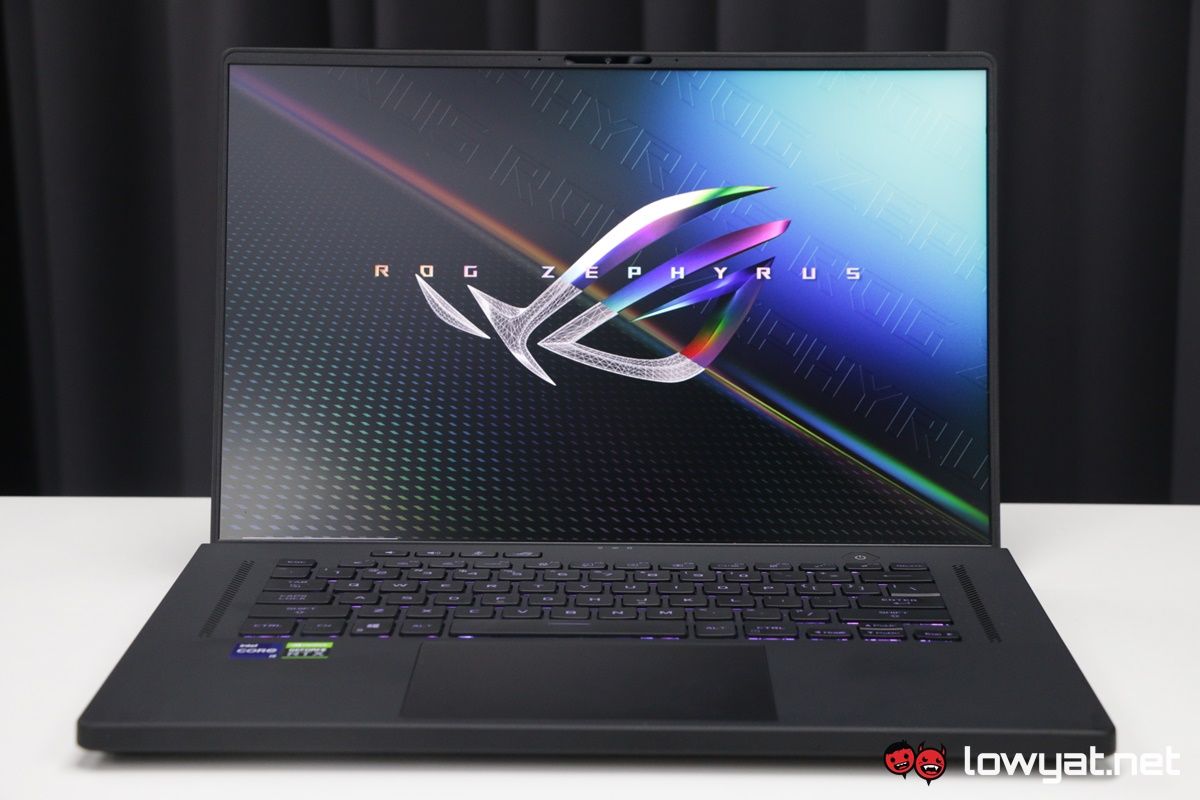
So, there you have it. I will repeat the same sentiment that I said about the Zephyrus G15: the ASUS ROG Zephyrus M16, while not quite the thin and light portable powerhouse, is a gaming laptop that checks off all the right boxes, especially when it comes to productivity and gaming.
If anything, it harkens back to a time before AMD jumped back into the gaming laptop scene with its Ryzen mobile CPUs, when Intel and its chips was practically the de facto processor for gamers. For that matter, the Core i9-11900H CPU in this machine is refreshing, given the general lack of 11th generation Tiger Lake-powered laptops in our list.
The ASUS ROG Zephyrus M16 effectively gives a choice between the two warring brands: Intel or AMD.
Of course, with its steep RM11499 price tag, somewhat identical design, solid design and hardware, the M16 essentially gives fans of the ASUS brand what I personally believe to be a unique scenario: a choice between a laptop powered by Intel’s Tiger Lake or AMD’s AMD Ryzen 5000 mobile series.
Follow us on Instagram, Facebook, Twitter or Telegram for more updates and breaking news.


